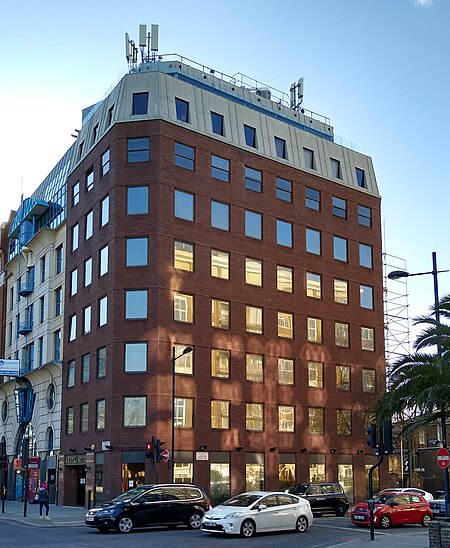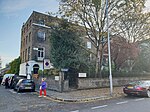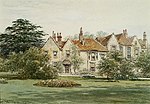Embassy of Paraguay, London
Buildings and structures in the Royal Borough of Kensington and ChelseaDiplomatic missions in LondonDiplomatic missions of ParaguayHolland ParkLondon stubs ... and 2 more
Paraguay stubsParaguay–United Kingdom relations

The Embassy of Paraguay in London is the diplomatic mission of Paraguay in the United Kingdom. It is located in a multi-use office-building on Kensington High Street which it shares with, among others, a Consulate of Romania.
Excerpt from the Wikipedia article Embassy of Paraguay, London (License: CC BY-SA 3.0, Authors, Images).Embassy of Paraguay, London
Kensington High Street, London Earl's Court (Royal Borough of Kensington and Chelsea)
Geographical coordinates (GPS) Address Nearby Places Show on map
Geographical coordinates (GPS)
| Latitude | Longitude |
|---|---|
| N 51.497194444444 ° | E -0.20486111111111 ° |
Address
M.E.I.C House
Kensington High Street 344
W14 8NS London, Earl's Court (Royal Borough of Kensington and Chelsea)
England, United Kingdom
Open on Google Maps









